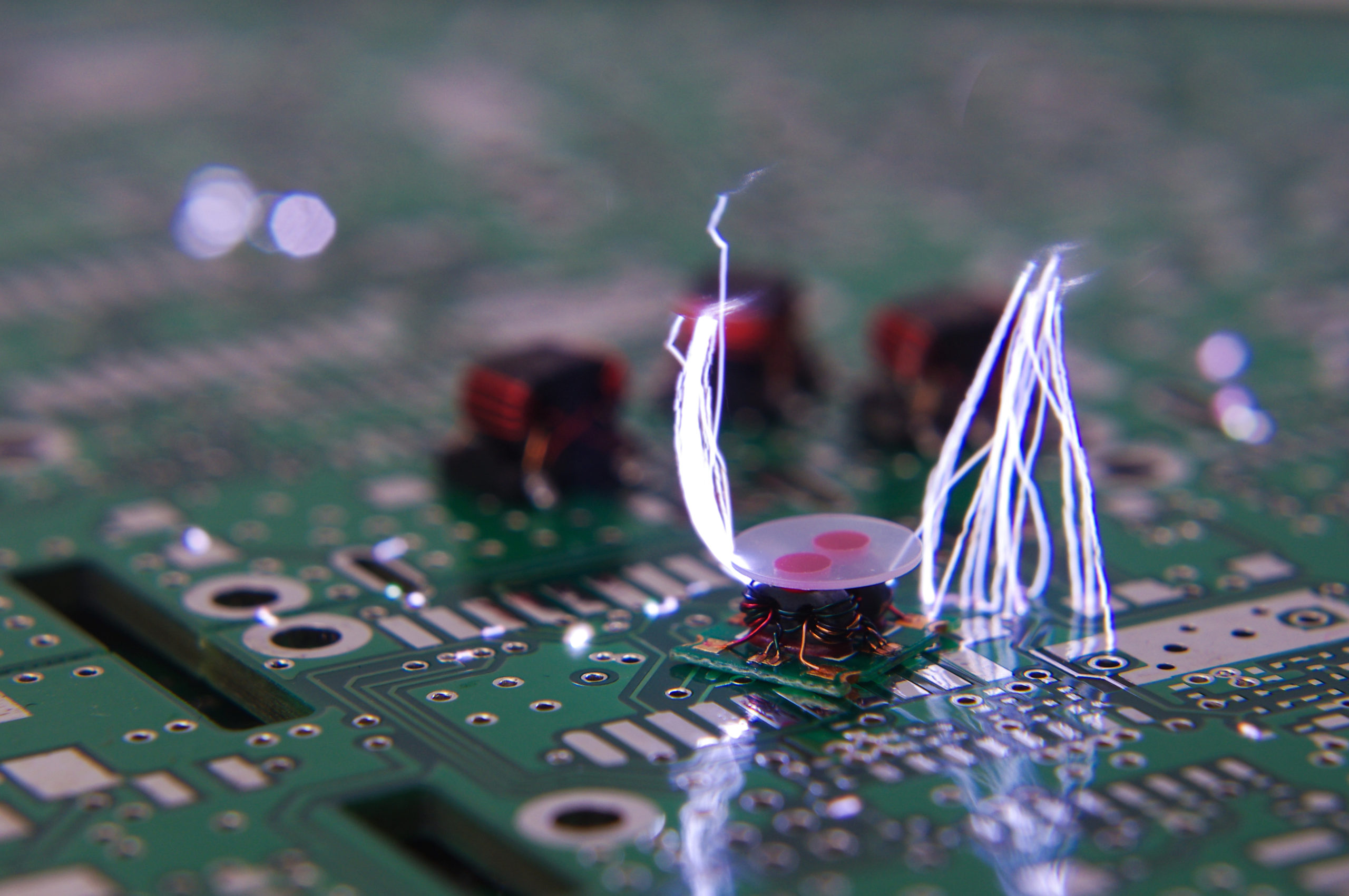Electrostatic Discharge 101: Sources, Dangers, and Solutions
October 6, 2021

Do you know a tiny, solitary spark can permanently damage sensitive electronics?
We’ve all been zapped by static electricity, which is the common term for electrostatic discharge. After walking across a carpet and then reaching for the door handle or a light switch, we feel that abrupt shock on our fingertips. For us, it’s a momentary jolt, but if this happens in a manufacturing facility, the results could be disastrous, destroying the integrity of countless electrical components.
That’s why we take electrostatic discharge seriously.
The Science Behind Electrostatic Discharge
But what is electrostatic discharge, or ESD, and why can it cause such damage to electronics?
Science tells us that ESD is caused when the electrons that have built up on an object do not equal the object’s number of protons. The electrons must go somewhere to balance things out, which is what causes those tiny sparks of static electricity. Think of ESD as a miniature lightning storm. Like its big brother, ESD energy will find its way to, and through, the nearest object.
An electrostatic discharge can be thousands of volts, so when it comes into contact with electronics circuitry designed for much lower voltage levels, it can easily destroy critical components.
When a large amount of static is discharged into a device, the evidence is usually visible. Careful study of a damaged circuit board, for instance, might show a minuscule hole that’s been blown into the surface of the board — just like a lightning strike will leave a hole in the ground.
But sometimes, the damage caused by an ESD might not be immediately apparent. Electronics that have been exposed to a static discharge might pass testing and work as intended for some time, leaving you to think it wasn’t harmed. However, the effects of the discharge could cause the component to have a much shorter lifespan.
When a component passes testing, but later fails during use by the customer for no apparent reason, it’s called “latent failure mode.” This leads to poor quality products, dissatisfied customers, and ultimately harms the reputation of the manufacturer.
Electrostatic Discharge in the Past and Present
ESD isn’t a new problem. There’s evidence that, as far back in history as the 1400s, military forts in Europe and the Caribbean had methods in place to prevent static electricity from igniting gunpowder supplies. Static electricity has even been blamed for the 1937 Hindenburg disaster. Researchers say it probably ignited the hydrogen that kept the aircraft aloft.
Today, electronics are present in almost every aspect of our daily lives. For manufacturers of electronics components, that means proper control and mitigation of ESD is a must. Cost alone is one factor. The EOS/ESD Association has released figures that estimate 25% of damaged electronics in which a source can’t be identified were most likely impaired by electrostatic discharge. The organization has also estimated that the yearly cost to industry due to ESD is as high as $5 billion!
How Electro Soft Mitigates Electrostatic Discharge
Static discharge can come from sources you probably wouldn’t even consider.For instance, the tape used to seal up a box of components. We’ve conducted tests in our facility that show the simple act of pulling out a piece of tape can generate 3,000 static volts! Handling a component bag can generate anywhere from 100 to more than 800 static volts. Your water bottle can even produce over 5,000 volts!At Electro Soft, we use several tools and methods to mitigate these problems.
-
Anti-Static Table Mats and ESD Wrist Straps
On a workbench, for example, a special table mat, which consists of a dissipative material (often called an anti-static mat or an ESD mat), collects static and then discharges it through a grounding wire. An ESD wrist strap serves a similar purpose by channeling any built-up charge to a ground source.
-
ESD Storage Bins and Floor Mats
We use special parts bins and containers as well, which conduct any static charge through to the anti-static mat. On our floor, we use ESD mats, which work like the table mats to dissipate electricity safely.
-
Metallized Totes
When the component we’ve assembled leaves the ESD protected area, we place it into an ESD dissipative tote or a special metallized bag. It is then closed and sealed to prevent electrostatic discharge outside of the protected area.
-
Clearly Labeled ESD-Protected Spaces
All ESD-protected areas are carefully and clearly marked by signs and placards that warn you before you enter or leave the area. Anything that’s not necessary for the project must be left outside the area.
-
Specialized Gear for Staff
Our production staff wears ESD jackets and heel straps while working in Electrostatic Discharge Protected Areas (EPA), and we follow the American National Standards Institute (ANSI) direction on ESD safety.
By following these steps and maintaining this controlled environment, we’re able to meet all ANSI/ESD S-20.20 Standards, protecting our components and our customers’ final products in the process.
Protecting Our Customers Every Step of the Way
Protecting our clients and ensuring the integrity of the products we deliver is paramount to us. We take extra care to provide our partners with all the information they need to make the best decisions regarding their future electronics manufacturing projects.
Are you ready to discover how Electro Soft can support your upcoming cabinet assembly and electronics builds? Reach out to us today!
